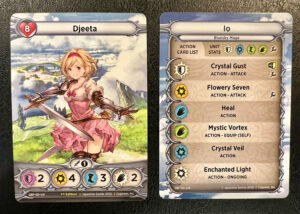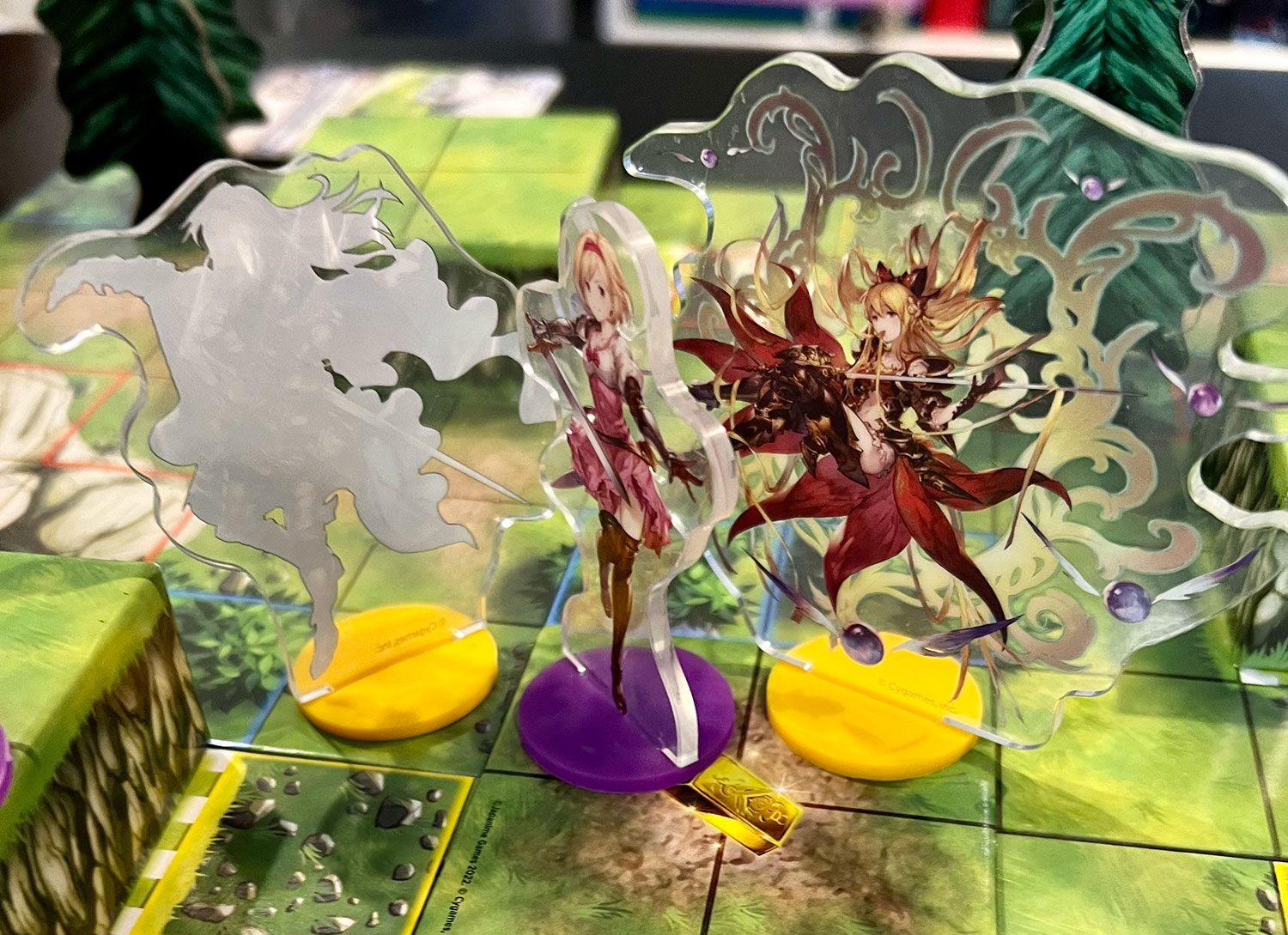 Everyone in my life enjoys combat games but me. They revel in painting miniatures, building terrain, and taking over my whole living room with complex battle scenarios, whether it’s space marines, mini mechs, hobbits, or X-wings. I am the curmudgeon who derives no enjoyment from painting nights. I’m a simple soul, one who prefers card games, particularly those with watercolor landscapes, happy birds, or pretty anime art. But as I’m not a tyrannical board game dictator, sometimes we have to search out a happy medium for game nights.
Everyone in my life enjoys combat games but me. They revel in painting miniatures, building terrain, and taking over my whole living room with complex battle scenarios, whether it’s space marines, mini mechs, hobbits, or X-wings. I am the curmudgeon who derives no enjoyment from painting nights. I’m a simple soul, one who prefers card games, particularly those with watercolor landscapes, happy birds, or pretty anime art. But as I’m not a tyrannical board game dictator, sometimes we have to search out a happy medium for game nights.
Japanime Tactics: Granblue Fantasy is a game that seeks to fill that niche. It’s a simple-to-learn, pared down combat game that is compact enough to fit most tables, has beautiful acrylic standee figurines and modular terrain, and, most importantly to me, has pretty anime art. Calling itself an Expandable Battle Game, it has a little something in it to please any game-night curmudgeon. But is it the right game for you?
Gameplay Overview:
In the beginner game of Japanime Tactics, players start by taking a command card and drafting character boxes, each of which comes with an acrylic standee, a stat card representing that character, and action cards. The action cards for each character on a team are shuffled together to make one deck. Playing action cards from your hand is how characters can attack and defend against one another. Next, players set up the modular playfield and place their standees. One starter box comes with four double sided battlefield tiles, a Control Zone tile that sits at the center of the board, 3D trees, and hills in two different sizes. These terrain pieces can be rearranged and combined to make repeat game experiences a little different.

Each round has three phases, draw, action, and cleanup, and play continues for six rounds, or until one player reaches a win condition (12 victory points for the beginner game, 24 for the standard, or whoever has the most points after one player has been knocked out in battle royale mode).
Battle takes place in the action phase. Each character’s stat card has symbols for defense, attack, speed, and interact (which represents draw power and interaction with terrain), each with different numerical values and colors. On a turn that you play an action card from your hand, if the icon or color on it matches the icon or color on your character’s stat card, you get a bonus to the number listed for the stat. If, after playing that card, you have another action card in your hand that matches the color of the first one you played, you can use it to activate a second character, chaining their attacks together. The defending player can try to dodge, hoping that they can draw a card off of their deck with defense, or they can activate their command card to play something from their hand.
A round ends when every character has either taken a turn or passed, and then the cleanup phase begins. Some cards have abilities that go off here with end-of-round effects, and it’s also when victory conditions are reached. If it’s not the end of the 6th round, play starts back at the draw phase, and continues until a winner emerges. The game also includes objective cards, giving you the option to incorporate more complex end goals on subsequent plays.

Game Experience:
There are currently two different starter sets for Japanime Tactics, each with four different characters, and there is also a twelve character expansion pack available for purchase. One starter set works for two players, and with two sets you can expand up to four players. Presumably, the offerings are intended to grow, possibly to include other intellectual properties down the line.
One starter set contains everything you need to play the beginner version of the game with two players each controlling two characters, but if you want to play what the rulebook calls the “standard” version of the game with four characters a piece, you’ll need two starter sets. With two starter sets you can also play a three to four person battle royale. In each mode of the game the goal is to reach a set number of victory points, and victory points are earned by defeating your opponent’s characters in combat, or maintaining dominance in the control zone for a full round.

What makes this game unique to me is the lighter, easy-to-grok combat system. You move your character, take an action, and do whatever your cards say. The rulebook starts by guiding you through a simplified first game with lots of examples, always a welcome addition for me when I’m learning a new system. The rules of the game are fairly simple, with enough thoughtful details to make it flow in a balanced way. For instance, if you want to be the first player you have to use a whole action to take control of the first player token, weighing whether that sacrifice is worth the benefit. It is a bummer that one starter set isn’t enough to play a standard version of the game out of the box, though. The beginner game is good for learning the mechanics but doesn’t have much meat on its bones.
The production in this game is the real standout. The figures are showpieces, with crisp, detailed art. Some of the standees are very wide and take up more space than others, which becomes cumbersome in a game where one of the major goals is to occupy the same small center space. While the figures are beautiful, the game is played from all angles, but the standees are only printed on one side. You’ll spend a lot of time turning them to see which one is which depending on where you’re sitting.

The box is small and efficient, though, packing everything in well. I’m only passingly familiar with the IP, but the art is immersive enough that I didn’t feel left behind, and knowing a character’s backstory isn’t necessary to beat the other player to a pulp with them. Each character has different stats and attack styles, making them interesting to mix and match. The modular terrain, especially when both base sets are combined, is very effective. We enjoyed arranging and rearranging the playing field before playing, and if the battle system expands I can see potential for terrain being an exciting way to refresh the game.

Final Thoughts:
After playing a variety of configurations of this game with different layouts, characters, and player counts, I can say that I am excited to see how Japaname Tactics expands. If you have two starter sets, this is an easy to get into, fun-to-customize experience. The gameplay is simple, but it gives you just enough room for strategy and decision-making to keep players on their toes.
The art holds up the usually high Japanime standard, and the variety in modules and modes of play mean that there are multiple ways to enjoy the game. If you’re a fan of combat miniature games, this likely will feel pretty simplistic, but for casual players, it hits the spot.
Final Score: 3.5 Stars – It has some kinks to work out, but fills a niche for a simple combat game.
 Hits:
Hits:
• Multiple modes of play and modules make it flexible enough for most game groups.
• Art is crisp and beautifully rendered, and the pieces are all high quality with nice cardstock and printing
• Easy and elegantly designed rule system
Misses:
• One starter set isn’t enough to play a full standard game, only a beginner game.
• The standees are only printed on one side, and some of them take up enough space that they’re difficult to maneuver around.
• May not be complex enough for fans of the genre to be satisfied.





















